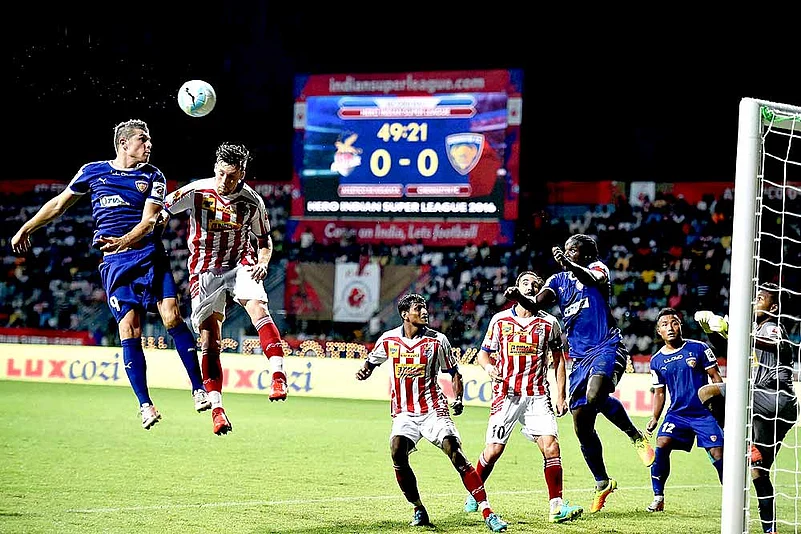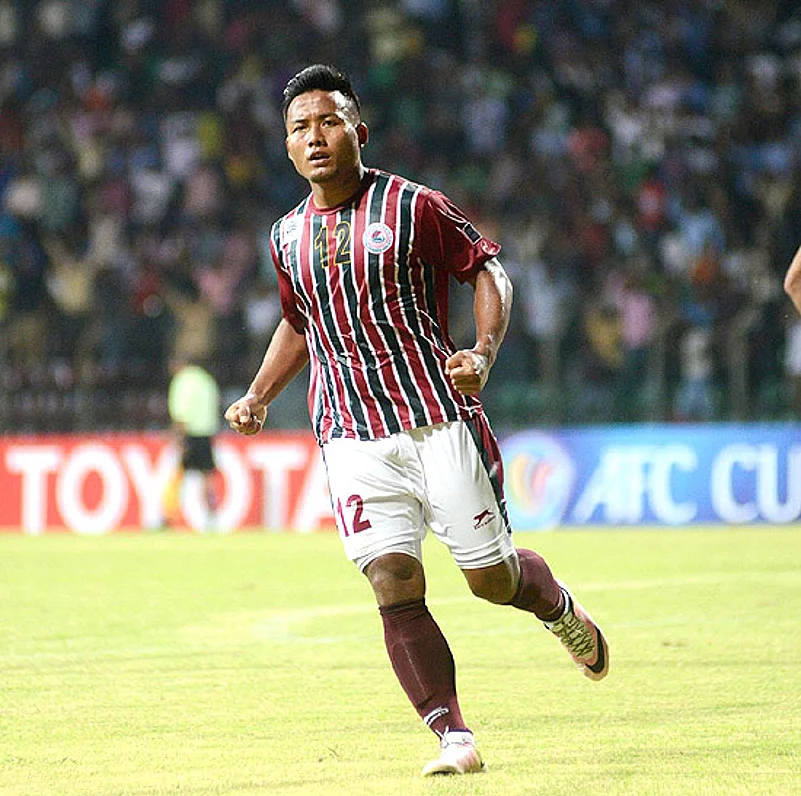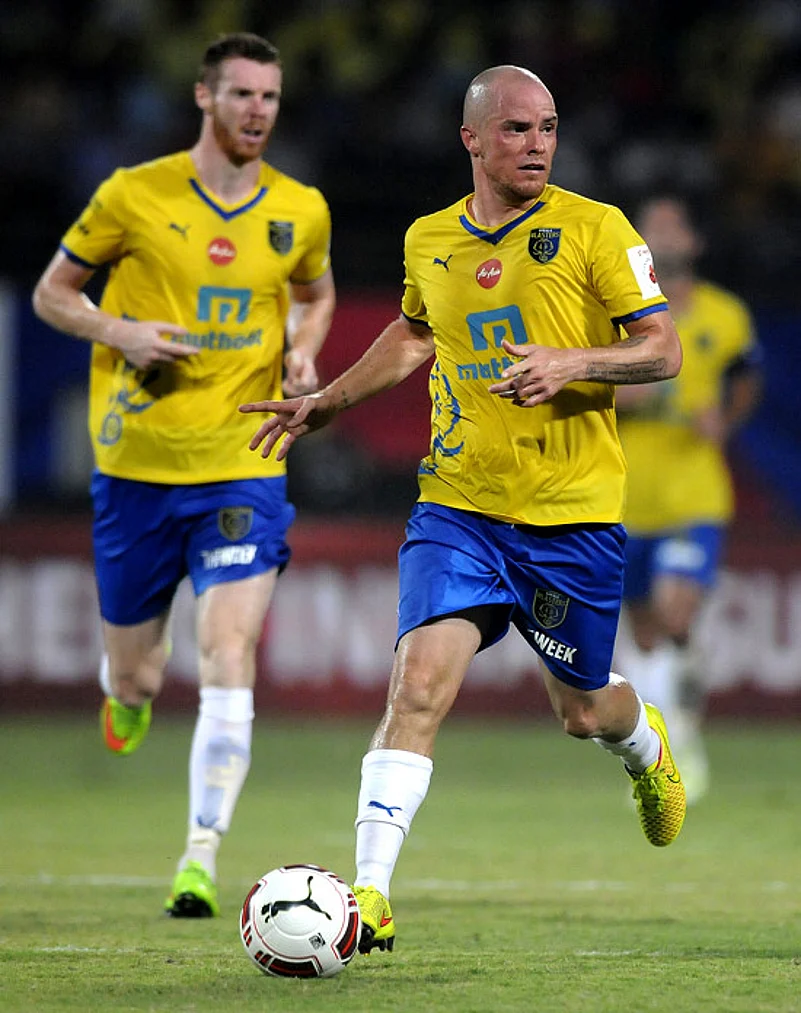Our newspapers are normally all aclutter with football news—reportage from the English Premier League, La Liga and Serie A, where titans of the modern game exult defiantly after their latest exploits. But suddenly, Indian soccer is making news. Even in the times of cloying ‘super sixes’, and hackneyed cheerleaders at cricket’s biggest carnival, IPL had to share headline space with the I-League. A little known football club, Aizawl FC, had won the domestic tournament. And a few weeks ago, the Indian national team had made it to the top 100 of FIFA’s ranking for the first time in 21 years, albeit tied with Nicaragua, Lithuania and Estonia for that final 100th spot.
But soon, Aizawl FC’s achievement—a feat no less miraculous than Leicester City’s EPL win last year—had drifted down a predictable path: of state apathy and petty politics. Two days after Aizawl FC was crowned the best football club in India—the first from the Northeast—it said in an dramatic press release that it would “resort to world-wide protests, demonstrations near Fifa offices and picketing of AIFF office”. The reason is that, despite winning the I-League, the club feared they would not be a part of the top-tier of Indian football next season if the proposed merger of the I-League—the premier club competition of India, with a provision for promotion and relegation, started in 2007—and IMG-Reliance’s Indian Super League (ISL) went through. The proposal, floated by the All India Football Federation (AIFF) in May last year suggested a three-tier football pyramid, with the top league comprising eight ISL sides and two/three of the I-League clubs.
Aizawl FC’s owner Robert Royte hoped the protests, including the threat of a ‘fast unto death’, would make the AIFF listen to their plea. “But there has been no response,” he told Outlook. However, many think the ISL must be the engine of growth of Indian football, despite whispers that the Aizawl episode may have upset AIFF’s plans. AIFF vice-president Subrata Dutta says that “merger plans are not in place now”, that it would take “two-three years for it to happen”. The ISL, says Dutta, will be a six-month league from next season, with the number of foreign players a team can field to come down to four from six. That would make ISL clubs eligible for the Asian Football Confederation’s (AFC) competitions, which have a 3+1 foreigner rule (with one player of Asian descent). Former I-League champions Bengaluru FC and East Bengal are reportedly in various stages of tying up with the ISL.
Where does that leave clubs like Aizawl FC? And what exactly has the ISL brought to Indian football?
In December 2010, Reliance signed a Rs 700 crore deal with the AIFF for 15 years to “promote and develop” the game in India and gained all commercial rights to Indian football. In 2014, the franchise-based ISL started by IMG-Reliance, Star India Ltd and AIFF quickly became the fourth most-watched league in the world. According to TV audience measurement body BARC, the 2016 edition of the ISL had 216 million viewers, a 41 per cent increase over the previous season. An AIFF insider says it is all down to drawing the middle-class back into the habit of watching football. Big players are also needed to pull crowds to the grounds, for the galaxy of iconic Indian soccer stars from the ’50s to the ’80s were never replaced.
Debjit Ghosh, former Indian captain and assistant coach of East Bengal till last year, says a concept like the ISL was long overdue. “We should have been on this course ten years ago. Football should be thought of as a business; we need advertisements and sponsors,” he says. Ghosh links the rise of India in the world rankings to this.
In its persona, the ISL is quite like its cousin in cricket, the IPL, and it would seem some fans are yet to make a difference. In a match between Delhi Dynamos and Chennayin FC in 2015, one heard the familiar chant of ‘Sachin, Sachin’ from the crowd when asked by the PA system to ‘make some noise’. It’s enough to get football purists’ knickers in a twist.

Chennaiyin FC’s Davide Succi heads one at the Atletico de Kolkata goal
But ISL hasn’t really managed to make an Indian a household name, say critics, like football writer Novy Kapadia. Over three seasons of the competition, says Kapadia, only one Indian, Jeje Lalkpekhlua, has made it to the top-ten goalscorers list. And talking of ‘big names’, the leading ISL goalscorer, Canadian Ian Hume, can be best described as a journeyman forward with spells at second-tier clubs like Tranmere, Preston and Leicester City before they were famous. And as far as luring people to the game is concerned, the East Bengal-Mohun Bagan derby still brings in close to a lakh fanatical fans into Calcutta’s Salt Lake Stadium, says former Indian captain Dipendu Biswas. He talks of the old, rivalrous emotions attached to the game and of the carnival atmosphere before the ‘big-game’ of Indian football.
However, football writer Jaydeep Basu says the league has rekindled interest in football. “The ISL is great entertainment. Don’t doubt their ability to bring people to the grounds,” he says. The quality of television telecast and the infrastructure have also improved vastly, but he questions the league’s structure. “Apart from the likes of Jeje and Sunil Chhetri, no Indian player grabbed eyeballs,” he says.

Biswas concurs with that. He says that work from the grassroots has not been up to scratch other than in Mumbai; the fact that Indian players have been largely ignored reflects in the team line-ups too. “Everyone wants to play with two foreign strikers, a foreign defender,” he says, explaining that important positions are not usually given to Indians. “There should be one compulsory Indian striker,” he suggests. In response, AIFF’s Dutta says coaches choose players best suited for the position. “If Indian players are better, they will replace them,” he says. Dutta clarifies that franchises are also doing their bit to improve standards, citing the example of Atletico de Kolkata, who have a third-division side in the Calcutta Football League.
Biswas says that the ISL and its proposed academies were supposed to churn out players who would make the cut for the national squad at the upcoming FIFA Under 17 World Cup, a tournament India qualified for on account of hosting it. “Patience will bear results,” responds Dutta. “If it hasn’t happened, it doesn’t mean that it will never happen,” he adds.

If the ISL is to become the mainstay of our only league, structural changes are essential. FIFA will only recognise a single league from the country—currently the I-League—and the ISL has no second or third tier or a relegation/promotion system, as any top national league must. In October 2014, then FIFA general secretary Valcke had said the same, terming the ISL as a ‘tournament’. “You cannot have two leagues in a country—it doesn’t work. So, for us, there is one league under the aegis of the federation and that’s the I-League,” he had said.
Even if the ISL and the I-League do not merge soon, the scenario of both running in a calendar year could mean a massive workload for Indian footballers. While the I-League runs between January and April, the ISL is to begin this year in August and run till December, with May’s Federation Cup sandwiched in the middle.
Yet, undeniably, changes are afoot, with ISL a pretender to ‘top league’ status and ‘legacy’ clubs like Mohun Bagan and East Bengal lining up to play ball. The fog will clear soon, with the AFC expected to respond to AIFF’s proposal on including ISL clubs in its league on May 24. For the sake of the demotic romance that’s football, Aizawl FC’s protestations ought not to have been in vain.
















